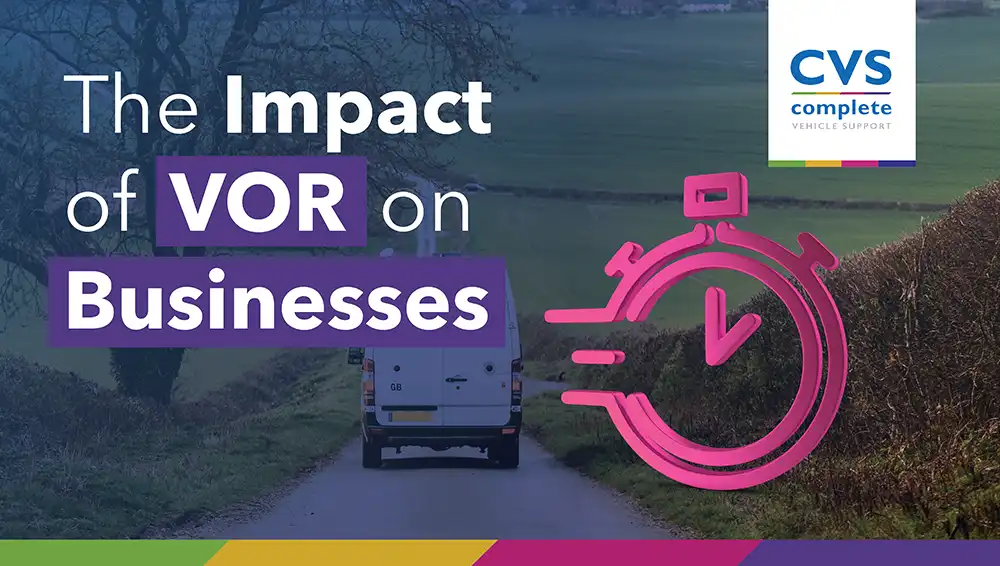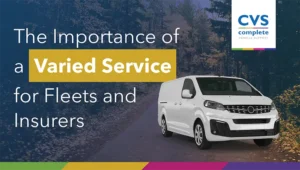For any business that relies on a fleet, whether it’s a logistics company, courier service, construction firm or corporate fleet, vehicle off road (VOR) is one of the biggest operational challenges, and every day a vehicle is out of action, it’s actively costing businesses money, time and customer trust.
From lost revenue to increased replacement costs, the ripple effects of VOR can be significant, and that’s why proactive repair management is essential.
For fleet operators, vehicle downtime is more than just an inconvenience, so it is important to reduce this risk as much as possible by minimising downtime and controlling costs wherever possible.
The Hidden Cost Of VOR
When quantifying the direct costs of a vehicle being off the road, lost work hours, rental or replacement vehicle expenses and repair costs all come into account, with the British Vehicle Rental and Leasing Association (BVRLA) highlighting that the average cost of vehicle downtime for a fleet can be as high as £727 per day, per vehicle, without factoring in reputational damage.
Unfortunately, however, the true impact goes much deeper, as businesses with inefficient repair management often also find themselves facing:
- Disrupted operations: whereby when fleet vehicles are out of service, deliveries are delayed, appointments are missed, and operational schedules fall apart.
- Increased costs: where businesses face rising expenses for alternative transport, emergency rentals and administrative overheads.
- Customer dissatisfaction: where late deliveries or service disruptions directly affect customer retention and satisfaction levels.
- Employee inefficiencies: where drivers and field workers left without vehicles experience productivity losses, impacting overall business performance.
- And insurance implications: where slow repair turnaround times can lead to higher claims costs and drive-up insurance premiums.
What’s Driving VOR In Fleet Operations?
There are several factors which can contribute to prolonged VOR periods, such as:
- Delayed repair processes: whereby lengthy insurance claims, inefficient repair booking systems and poor communication between stakeholders can all cause unnecessary delays in getting a vehicle back on the road.
- Supply chain issues: whereby a lack of readily available parts, especially for specialist vehicles or EVs, can stall repairs, especially as in some cases fleets wait weeks just for a single component to arrive!
- Workshop backlogs: as busy or uncoordinated repair networks lead to bottlenecks, where vehicles remain in workshops longer than necessary due to inefficient scheduling.
- And a lack of strategic repair management: as without structured repair oversight, businesses struggle to control costs, monitor progress, and keep repairs moving efficiently.
How Can a Repair-First Approach Reduce VOR Impact?
Instead of being caught up in lengthy claims disputes or unnecessary admin, businesses that prioritise efficient repair management can significantly reduce VOR times and reap the additional benefits of:
- Faster repair turnarounds: as direct access to an optimised repair network means businesses avoid workshop backlogs and unnecessary delays.
- Controlled costs: by avoiding inflated repair costs and unnecessary replacements to ensure that financial exposure is minimised.
- Reduced reliance on credit hire: as the longer a vehicle remains off the road, the higher the dependency on credit hire or replacement vehicles.
- And improved operational efficiency: as keeping vehicles in service ensures smoother business operations and less disruption for staff and customers.
How CVS Minimises VOR Through Smarter Repair Management
At CVS, we take a proactive approach to repair management to ensure that fleet operators get their vehicles back on the road as quickly and efficiently as possible.
Unlike traditional claims management firms, our focus is solely on repairing vehicles swiftly and cost-effectively, without unnecessary complications, and we do this by offering:
- A nationwide repair network with access to over 200 independent repairers across the UK, covering cars, HGVs, commercial vehicles and EVs.
- Industry-leading repair times to ensure vehicles are repaired safely and quickly, with a focus on getting them back into service as soon as possible.
- Transparent cost control with real-time tracking and detailed MI reporting to ensure businesses have full visibility over repair costs and progress.
- And proven financial savings, as our average vehicle repair cost in 2023 was just £1,716.
So, Why Choose CVS?
With over 14 years of industry experience, we work with insurers, brokers and corporate fleets to deliver smarter repair management solutions that put vehicle uptime first, and in 2023 alone, we managed over £25M in repair costs across 23,000+ vehicle repairs, helping businesses reduce operational downtime and unnecessary expenditure.
But what really makes us to best team for reducing VOR is the fact that we are not a claims management firm, so we don’t get caught up in lengthy disputes or credit hire delays and we only focus on what matters: getting your vehicles back on the road.
After all, reducing VOR is not just about fixing vehicles, it’s about protecting your bottom line, maintaining business continuity and ensuring that your fleet remains on the move. And by working with CVS, you can be confident that downtime will be minimised, costs will be controlled, and your business will stay ahead of the curve.
If you want to take control of VOR and reduce the financial and operational impact on your business, contact us today via our website, calling 0333 3609525 or emailing: [email protected]




